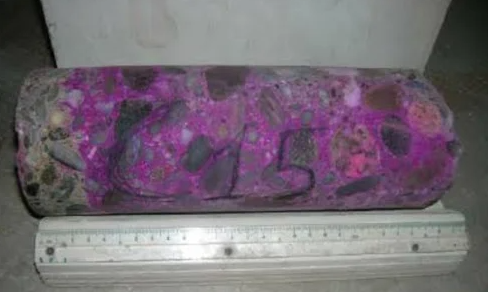Supply Type :

Ground penetrating radar (GPR) is a non-destructive detection and imaging method which identifies subsurface elements either underground or within a surface such as concrete.

Core tests are generally performed to assess whether suspect concrete in a new structure complies with strength-based acceptance criteria or not. In addition, it is critically used to determine in-place concrete strengths in an existing structure for the evaluation of structural capacity.

Resistivity testing detects the possibility of reinforcing steel corrosion and the diffusion rates of chloride within the concrete.

Concrete Carbonation testing provides a means with which the inspector can determine the extent of carbon dioxide infiltration into the concrete.

Concrete Crosshole sonic testing is a method to determine the structural integrity of drilled shafts and other concrete piles. The CSL method is considered to be more accurate than sonic echo testing in the determination of structural soundness of concrete within the drilled shaft inside of the rebar cage.

The Bridge load testing is carried out for the purpose of the evaluation of the load carrying capacity and the durability of fatigue by measuring the deformation and stress of bridge under the actual loading on existing bridge.

Water permeability test determines the resistance of concrete against water under hydrostatic pressure. This permeability test should be considered the dominant test to evaluate the case whereby concrete is subjected to hydrostatic pressure.

Rebound Hammer test is a Non-destructive testing method of concrete which provide a convenient and rapid indication of the compressive strength of the concrete.

Aggregate crushing test service provides a relative measure of resistance to crushing under a gradually applied compressive load.